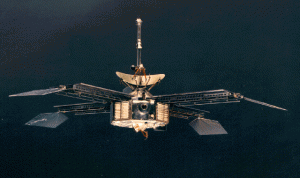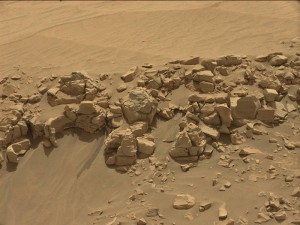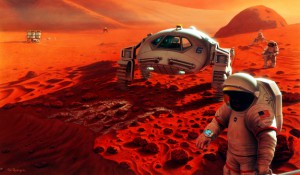Mars has always been a planet of much mystery, and from early on been the go-to-planet for alien movies and martians. There have been several missions to Mars, however not every single mission has touched down on the planet’s surface. It is much easier to send a satellite to Mars to orbit it and observe it and gather data. But, of the multiple attempts to touch down on Mars, seven of these expeditions have been successfully. Throw the past 50 years, many expeditions have been undergone, but the future holds even more possibilities.
Attempts at Mars Flybys began all the way back in the early 1960s with the Soviet Union. Several of the first spacecrafts failed to ever get close enough to Mars due to miscalculations, launch failures, signal loss, software malfunctions, and many more. The first successful flyby, Mariner 4, launched in 1964 and flew by Mars in 1965. This mission confirmed that Mars had a thin carbon dioxide atmosphere. The next several successful missions (with many more failed attempts in between) furthered our understanding of the Red Planet. We gathered: the dimensions of the planet, atmospheric compositions, topography, planet’s gravity, higher resolution images (by the 1990s) and many smaller details. This was within a span of 50 years and a lot was learned about the small planet. With all the newly gathered data, curiosity about the planet rose, and the search for potential habitability began.

There are currently 7 active missions on Mars, and to the people of our day and age, the most famous mission to Mars has been the Mars Curiosity Rover. The most interesting and most current thing regarding Curiosity is a photo that would be the first definite evidence regarding flowing water. We are unsure of what is actually depicted in the photo.

This photo and claim comes from a UFO hunter, who blogged that the dark streak is in fact evidence of flowing water on Mars, and claims that NASA is attempting to hide the fact that they found the water. In case you haven’t been aware of this, NASA did find evidence that could support the theory that Mars has water, but they never claimed they found FLOWING water on Mars. Whether or not this is actually flowing water or not on Mars, it is still super exciting to think about how close we are getting to making a potentially revolutionary discovery in our search for life outside Earth. In addition to Curiosity’s search for water and life on Mars, it has also been assessing the planets environment and conditions for possible hazardous radiation, mining into the ground and finding minerals that suggest that a lake was once present, and also taking thousands of pictures along the way which have helped keep the public informed on the progress of the mission.
Future missions for Mars are some of the most interesting possibilities ever. The last (and only) time humans have have stepped foot on another celestial body other than our own planet was in 1962. The famous moon landing quote spoken by Neil Armstrong “That’s one small step for man, one giant leap for mankind” resonates to even this day. Now 53 years later the possibility of sending human to Mars, a body much less suitable for humans than the moon, could become a reality. The goal of the mission would be to send the humans to the planet by 2030s. Currently there are many factors affecting the mission, one being of course budget. Sending humans to another planet (successfully) is not cheap. Especially being government funded, the government does not take it as a high priority. Once the budget and research is all completed, what would the mission consist of? There are different ideas such as sending people to mars, gathering data, exploring, then returning. But a much more intriguing possibility is the idea of a one way trip to Mars. Have you ever heard theories of whether or not humans could colonize Mars? Well sending a group of people to Mars and never returning would be like a precursor to this. Leaving someone on a planet could end in disaster, but it could also be the first step to one of the greatest adventures in the history of mankind.

“Space exploration is a force of nature unto itself that no other force in society can rival.”
-Neil DeGrasse Tyson
http://www.space.com/13558-historic-mars-missions.html
http://www.space.com/24268-manned-mars-mission-nasa-feasibility.html
http://www.techtimes.com/articles/98232/20151022/curiosity-rover-photo-shows-flowing-water-on-mars-claims-ufo-hunter.htm
I just might want to offer a tremendous go-ahead for the incredible data you have here on this post. I will be returning to your blog for all the more soon.
https://www.totallyjewishtravel.com/passover_resorts/
I appreciate your skills and style in elaborating on the topic. It bound the reader for long. I have liked everything that I have read in the article so far. Nice content.
https://lovetds.com/product-category/sweatshirts/
Thanks for getting me back into reading again. I really enjoyed the stuff you shared in the form of blogs. Keep writing.
https://tonirose.co/collections/clips